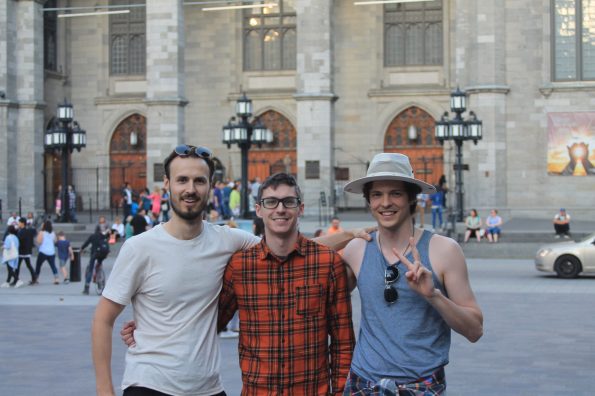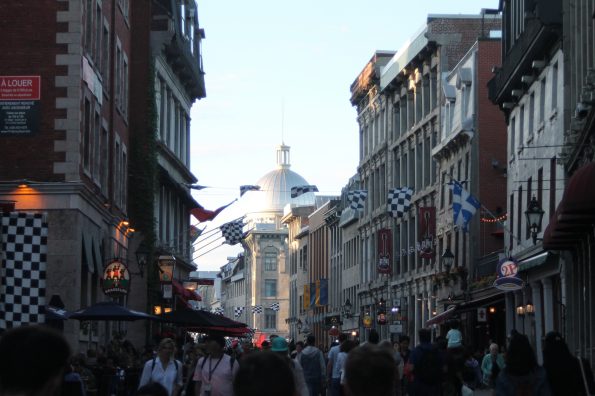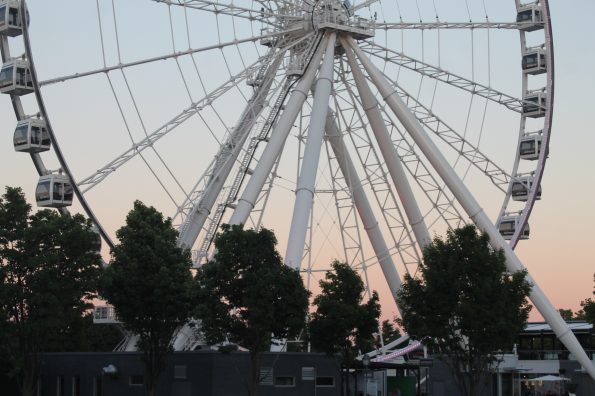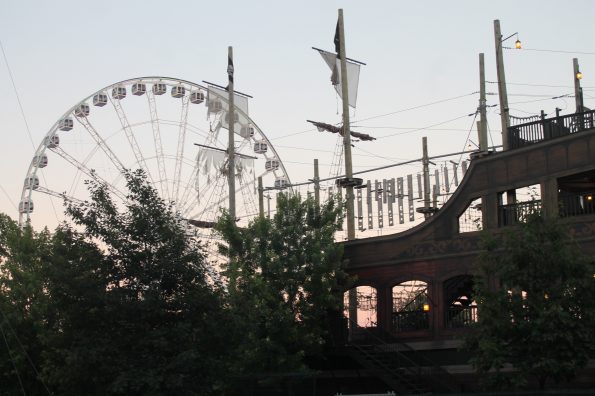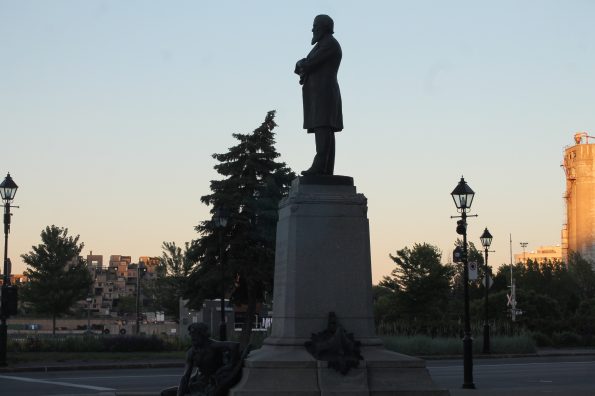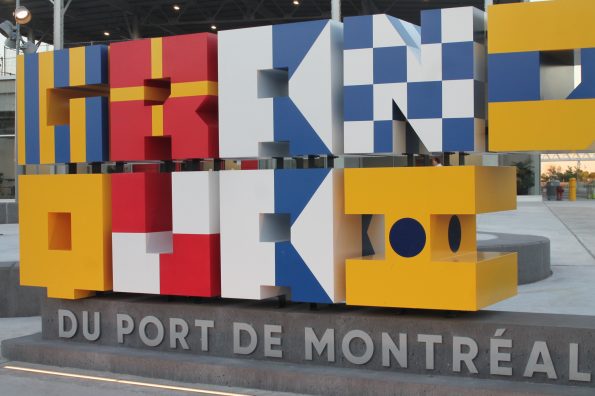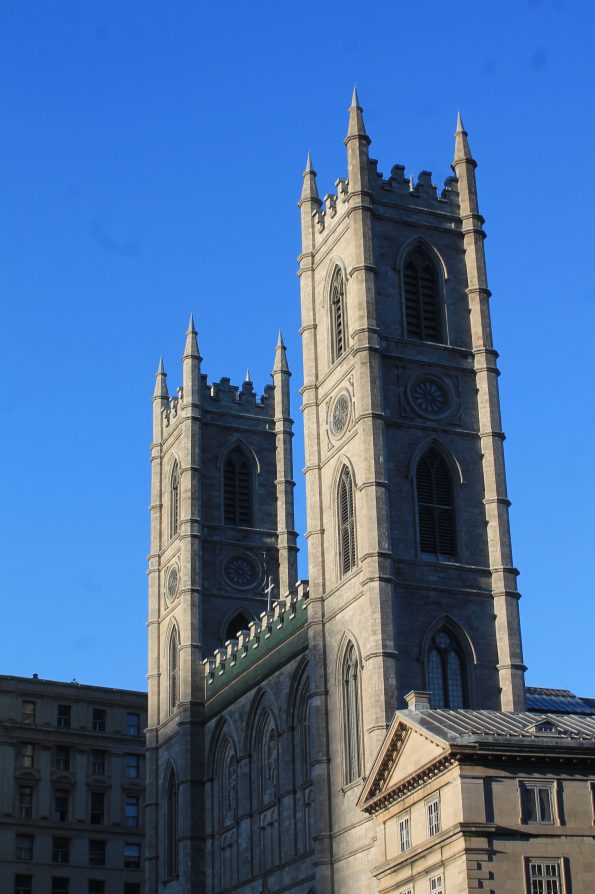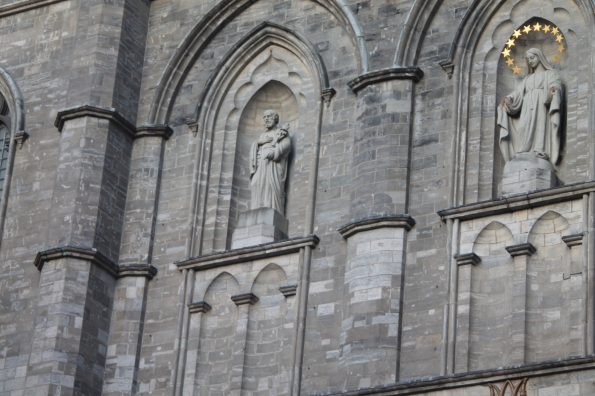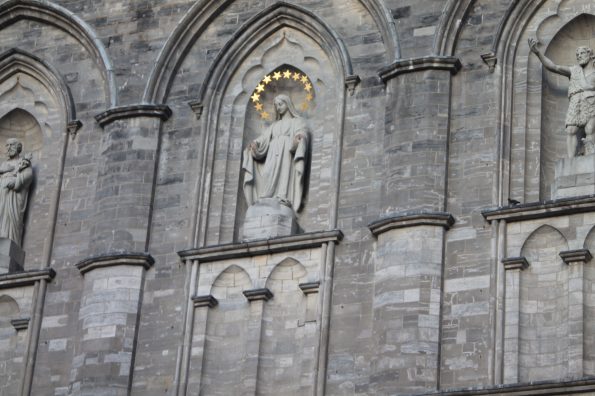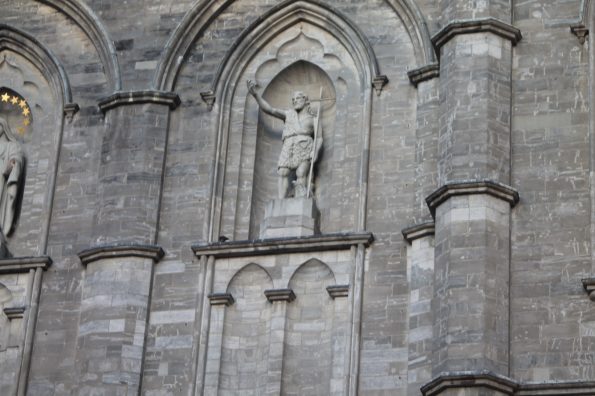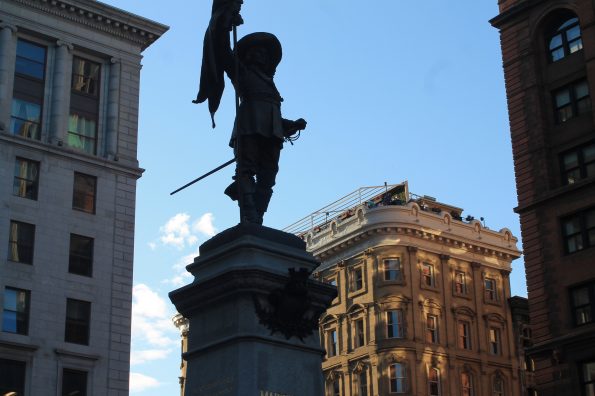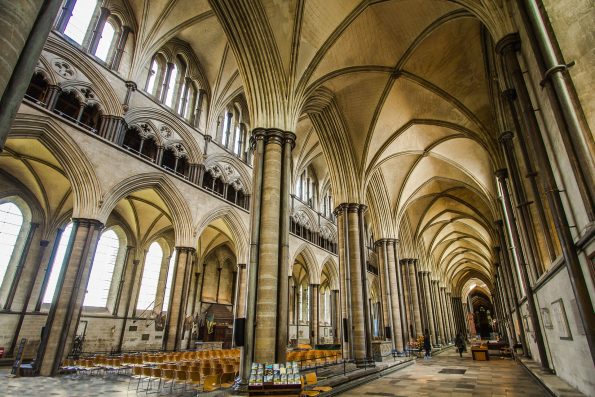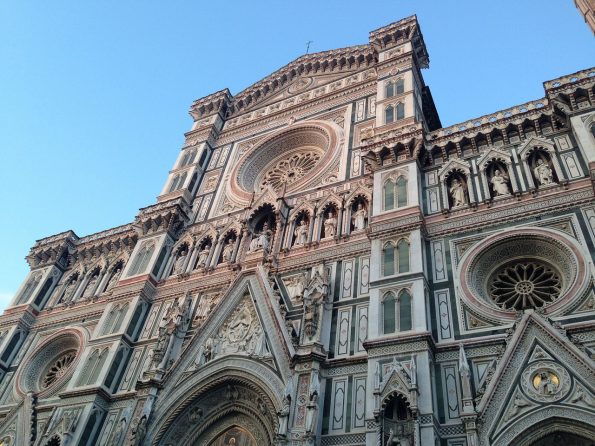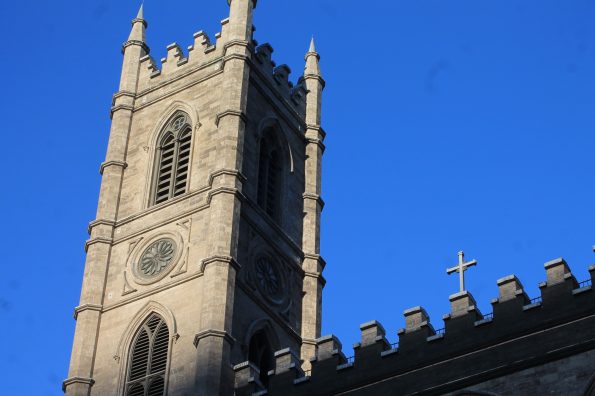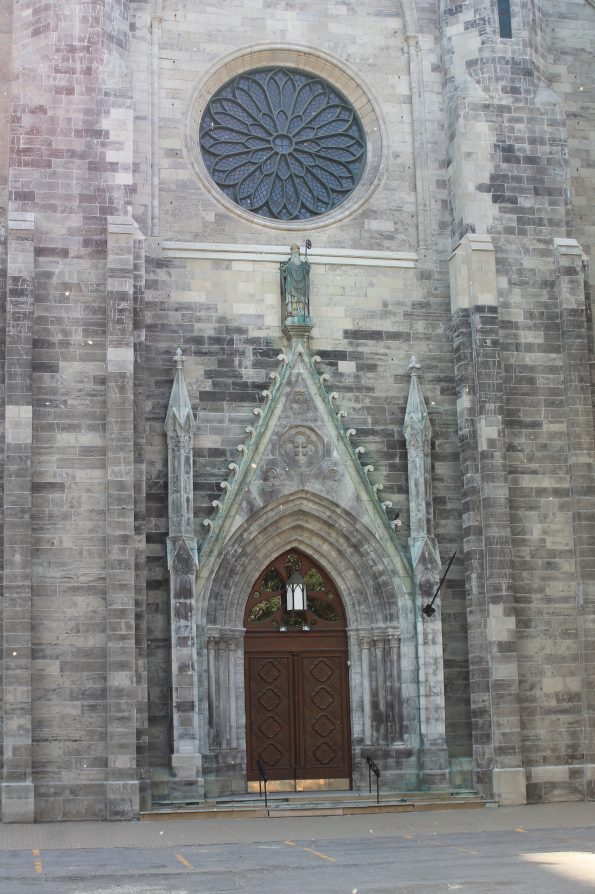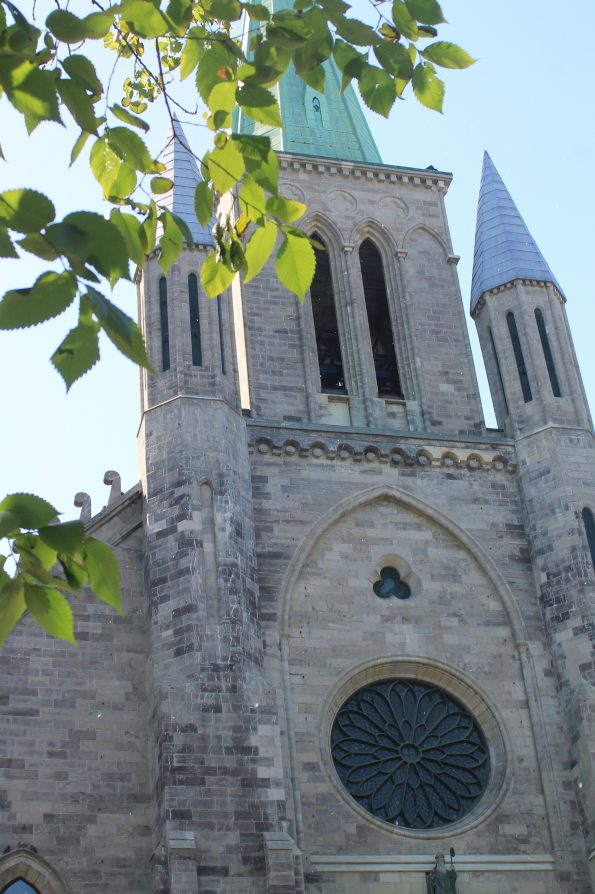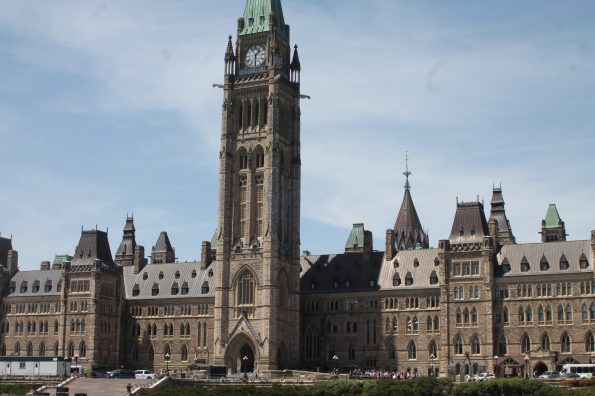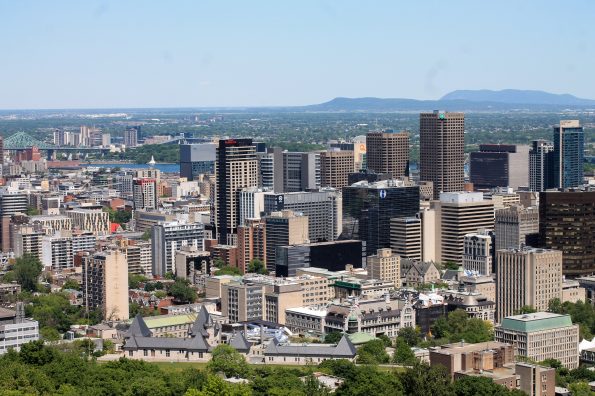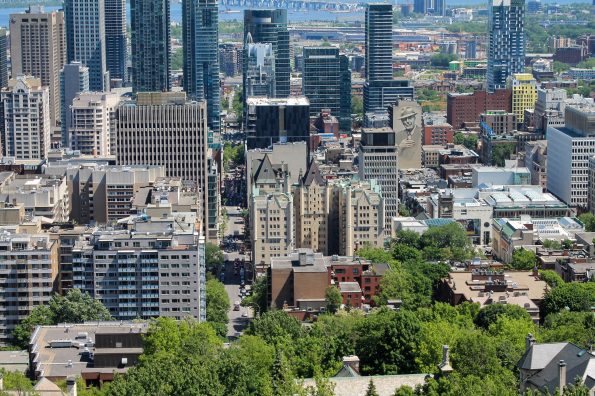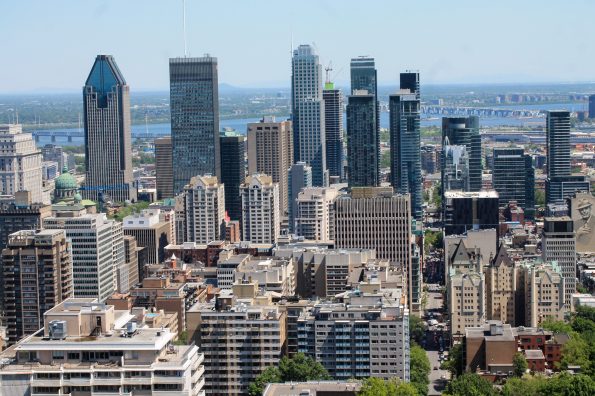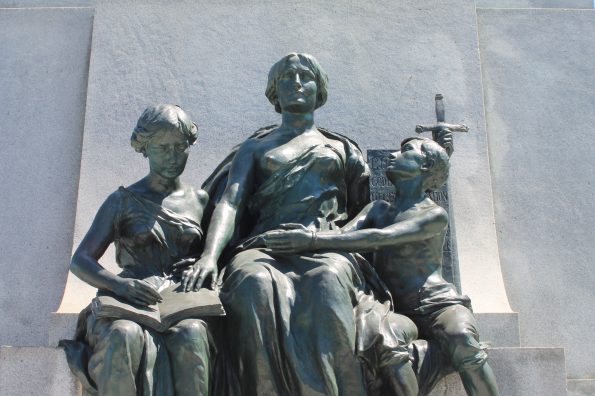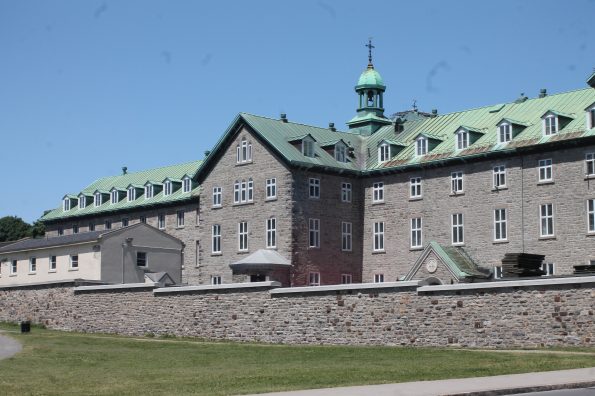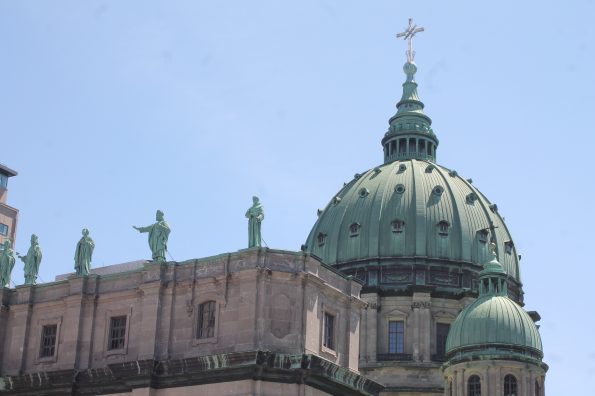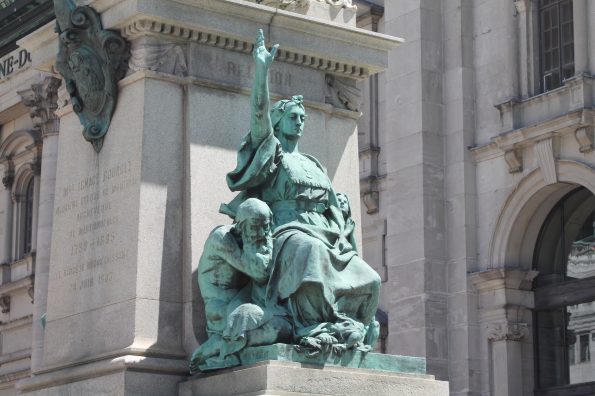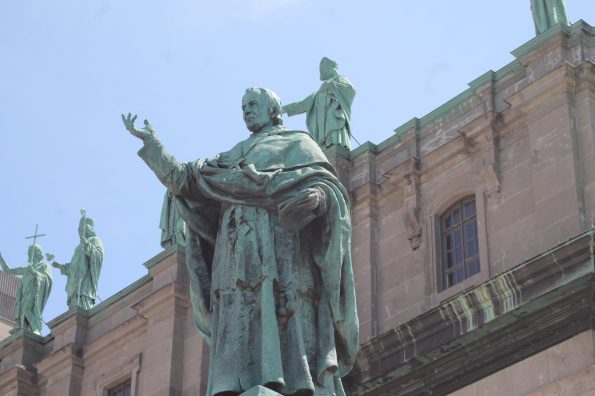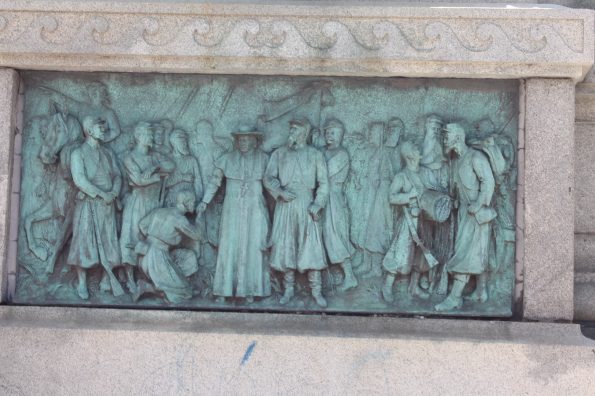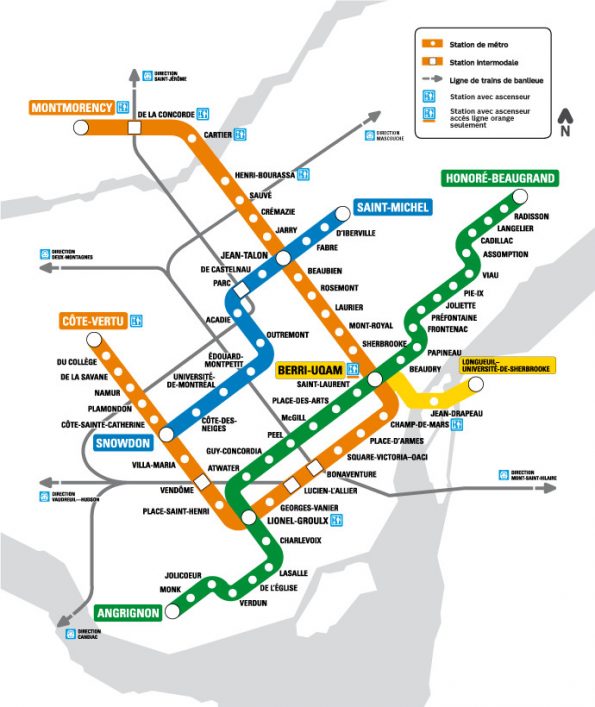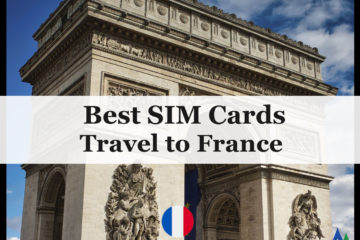Gothic Revival Architecture & Notre-Dame Basilica in Montreal
Visiting Montreal during the Formula 1 Grand Prix weekend was going to be a wild ride, and not only because of the mechanical bull at Chez PKs, but the crowds of people enjoying the Old Montreal district, the Notre-Dame Basilica, and climbing to the top of Mont Royal. Between all the festivities, race events and beer tents, we took the time to explore some of the quieter and more historic sights of Montreal.
The best place to start is walking along the cobblestone streets of Old Montreal to the riverfront boardwalk. Events are held here throughout the spring and summer, including buskers and musical performances. You can even rent a paddle-boat and Zip-Line. Montreal is one of the best cities to explore on foot or bike with monuments, street art, and public parks scattered around the city. It’s a beautiful city, perhaps one of the best cities in North America for viewing architecture, both modern and old. Ville-Marie, the original name of Old Montreal was founded in the 17th century and still holds on to this heritage today with beautiful Gothic Architecture like the Notre-Dame Basilica. Of course, the great lookout in the city is located on Mont Royal Park, from there the entire city stretches out into the horizon along the Saint-Laurence river.
Old Montreal Cobblestones
The spirit of Ville-Marie, the original French settlement, founded by explorer Jacque Cartier along the Saint Laurence River, remains part of Montreal’s character even 350+ years later. The district of cobblestone streets is filled with some of the city’s oldest buildings, monuments, and best places to grab a bite on a patio if you can get a table!
The narrow streets hosts some of the city’s most renown restaurants, brew pubs and shops. On the Formula 1 Grand Prix evenings, this is the best place in Montreal for celebrity viewing! Watch as Rolls Royce, Bentley, Ferrari and Limos put their suspensions to the test in a needless effort to impress on the warn out cobblestones. Honestly, walking along the busy streets in the summer, with street musicians and buskers performing is one of the best parts of visiting Montreal! Just walk and give your chauffeur the night off.
After a delicious meal, grab a drink at ‘Les Trois Brasseurs’ or head down to the waterfront and old Montreal Port to check out the small shops, ‘La Grande Roue’, Pirate Ship Obstacle Courses and public parks!
Notre-Dame Basilica
Located in the heart of Old Montreal is the city’s most beautiful church and religious site. The catholic church began in Montreal in the mid 17th century when Montreal was still known as Ville-Marie to the local French soldiers and fur traders. The first Notre-Dame Church of Montreal was built in 1672. However this beautiful structure was made from 1824 to 1829, with the towers finished later in 1841 and 1843. The Notre-Dame Basilica was designed in the Gothic Revival Architecture style, or “Neo-Gothic”. If you aren’t an architect or art major, we certainly aren’t, this basically means the Gothic style that became popular in the mid 19th century in the image of the medieval (12-16th century) Frankish architecture we know as ‘Gothic’.
The stunning interior for which the Basilica is known, was completed even later in 1879 or 1880 by Architect Victor Bourgeau. The full completion of the Basilica was the combined work of over 50 years by American-Irishman James O’Donnell, Englishman John Ostell and or course Quebecois Victor Bourgeau. The background alone of these Architects reflects the emergence of Montreal as a multi-cultural center and quickly growing economic and cultural hub.
In 1831, the population of Montreal was only 27,297 in the city. By 1881, 50 years later the population rose to 176,253 people. Montreal was one of the largest cities by population in 19th century North America. Today, the city of Montreal has over 1.7 million, bulging to over 4 million with the surrounding suburbs and is Canada’s second largest metropolitan area after Toronto.
Notre-Dame Basilica Events
- Hours: 8:30 am – 4:30 pm
- Fee: $6 per person
- Services: Guided Tour, Evening Light Show
- Events: Grand Organ Festival, Concerts.
- Official Website: Notre-Dame Basilica
Medieval Gothic Architecture
Traveling through Eastern Canada, the cities are actually quite old for North America. The architecture of Montreal, Quebec City, Ottawa and my hometown of Halifax were inspired by the European countries from where most of the citizens immigrated: France, England, Scotland, Italy and Ireland. So what is the difference between Medieval Gothic and Gothic Revival and what feature should you look for?
- Notre Dame De Paris 1163
Medieval Gothic, honestly the easiest place to start is getting the original date of the church or building. If it’s between the 13th and 17th century, great start! I found out how deep and complex the artistic Gothic theme can be for scholars, it’s too much! There have been historians working on breaking it down since the 1800s. But that’s way too far, I just want to know if a church his ‘Gothic’ or not.
- Salisbury Cathedral Arches & Ribbed Vaults
Fortunately, there are three agreed upon features that make a church or building Gothic: A Point Arch, like the Papal Hat, an interior with a series of vaulted ceilings with pillars, called “Ribbed Vault“, and lastly a row or individual supporting pillars on the outside called “Flying Buttress“. I actually recognized the last one right away after watching “Pillars of The Earth” mini series about building a church, and based off the book of the same name by Ken Follet. The outside pillars were incorporated to add lateral strength to the roof because of the wind. The church in the novels are based off the Salisbury Cathedral in England built in 1258, a Gothic Style Cathedral.
- Florence Cathedral Rose Pattern
Another indicator is the frequent use of a rose pattern in the front of the cathedral. Other famous Gothic Architecture examples include the famous Notre-Dame de Paris (“Our Lady of Paris”) was built in 1163 and finished in 1345. The Florence Cathedral (“Cattedrale di Santa Maria del Fiore”), and the St. Mary’s Cathedral in Lincoln England.
Gothic Revival Architecture
Gothic Revival, inspired by Medieval Gothic, but many of the buildings built between the 18th and early 20th century were more spacious, with wider arches and squarer shapes. This is primarily due to the advancement of materials and construction by this time period. The original Gothic buildings had to be made with narrow and tall arches to support the weight. By this time steel, iron and better framing techniques gave the architects the ability to create larger open spaces with less pillars.
- Notre-Dame Basilica
Oddly enough, by the early 20th century, many architects began to see the Gothic style as “uncompromisingly ugly”, but of course these were architects that never lived to see the giant concrete and brick cubes of the 1970s and 1980s that define our cityscapes today. Which are undeniably hideous. Thankfully, the 21st century brought inspired Architecture back to the forefront of city building.
- St. Patrick’s Basilica
- St. Patrick’s Basilica
The Notre-Dame Basilica in Montreal was designed in this newer Gothic Revival style and is one of the most beloved buildings in the city. Other notable Gothic Revival buildings include Big Ben, the Tower Bridge in London, the Canadian Parliament Hill and St. Patrick’s Basilica also located in Montreal.
- Parliament Hill
Mont Royal Public Park
Located directly west of old Montreal and Downtown is a 233m mountain called ‘Mont Royal’. The mountain is a great big public park popular among tourists and locals as a place to relax and escape the city, if only for an afternoon.
- Find Leonard Cohen
The mountain has the best lookout over the entire city, so bring your selfie stick and sharp eyes to spot the city’s great street art like Leonard Cohen! Around the base of the mountain are large grassy area perfect for a picnic, or a impromptu weekly Tam Tam drum circle! Every sunday during the summer you’ll find an informally organized drum circle at the George-Etienne Cartier Monument easily identified by the winged Goddess of Liberty at the peak.
Photo Gallery
Navigating Montreal
Getting around in Montreal is super easy! It’s one of few cities in Canada with a good metro system, called “Le Metro“. Stations are easy to find and can get you on and off the island of Montreal easily. Where the metro system can’t reach, buses are available throughout the city.
The city is also one of the few in Canada with Uber and Rent-A-Bikes stations called “Bixi Bikes“. Picking up a bike for an hour is one of the best ways to see the city, although it’s important to point out that most streets don’t have bike lanes and those that do are not separated by medians. Normally this wouldn’t be too bad but Montreal drivers are quite possibly the worst in Canada. Not kidding. So fair warning.
Bixi Bike Rental
Montreal has over 540 Bixi Bike Station where you can rent a bike and begin touring the city with ease! Simply go up to a station, use a credit card to make a purchase, view your unlock code and input the code into the bike keypad. Et Voila, you now have a bike ready to cruise around on! There is even an app available for iOS & Android, so you can easily find any other docking station near your destination.
- Bixi Bike Station
Bixi Pricing
- $2.95 CAD ($2.50 USD) for any one-way trip!
- $5 CAD for a Full-Day Pass, unlimited number of 30 mins bike rides for 24 hours
- $10 CAD for a Long-weekend pass
[google_maps id=”7135″]
